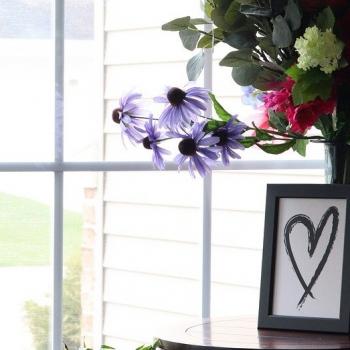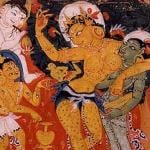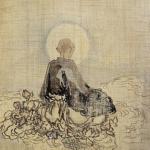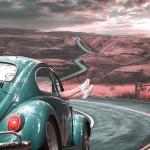It’s about life.
I had hoped to have finished a review of The Practice of Contemplative Photography: Seeing the World with Fresh Eyes, (available now at Shambala) about two weeks ago. But, with the ounce of perfectionism I still have, I decided I just couldn’t do justice to the book by then. So I left this rain-check, hoping to be back soon.
I still haven’t completed it, nor done many of the exercises, but it’s time now to write. I have a feeling more will come as my life settles down a bit in England… (suuuure….)
The book is by all means a masterpiece for those who want to bring their photography and contemplative lives to their pinnacle. Just opening it, I feel relaxed, with deepening awareness of the world around me, just as it is. I grow more inquisitive about the little things I would otherwise (and do otherwise) overlook a thousand times.
Much of my life, from around 8am until noon, revolves around coffee. Simple as it is, I might not have had that realization if it weren’t for this book. The photograph above is from this morning, my coffee cup sitting on a copy of one part of my recently completed UK student visa application. Peace triumphant over bureaucracy (I hope). The coffee stain on the left tells you it’s been here for a couple days. The page has three such stains now, as it sits without any real purpose on my desk.
This isn’t a book about theory, or what to believe or how to understand the world. In fact, the couple times this came up in the book (early on), I found myself disagreeing with the authors. But this just shows that I’ve been trained (minimally) in the world of classical photography, where things like the rule of thirds, focus points, and checking your corners are gospel. It wasn’t until about a third of the way into the book that I realized that this book simply has a different purpose, when I read:
When you get home, take time with your images. Don’t rush to pick out the good shots and reject the bad ones. Try not to be harsh or judgmental with yourself, but keep looking. Recognize what you have and try to see what worked and what did not. When you have a good sense of that, delete the images that did not come from real flashes of perception. (emphasis mine)
The purpose here is not to capture a classically beautiful image, but instead to sink into the moment at which a photo is taken. So, when I reached the chapter on texture I paused and soaked up the world around me. What I found most appealing was the texture of my hemp/blend pants.
But this photo is indicative of my above messiness as well as a lesson later in the book: Simplicity. There is just too much going on in this photo (for me). I think it captures my true perception – click on it and just gaze at the light on the jeans above my hand and you might ‘sink in’ to the texture as I did in that moment. But the peripherals, which fell into a calm fuzz in my mind’s eye, did not as well in the photo. (perhaps a faster lens, like this beautiful Nikon 50mm f/1.2, only $750…)
In fact the top photo of my coffee cup may be too busy as well due to the coffee ring, but I like it. It tells a story, provides context. What do you think? (perhaps compare to my earlier coffee cup photo, below)
But when the book shifts back into what I lovingly call a ‘philosophical’ mode, I sink back in to the book with deep appreciation. When discussing the topic of “Boredom and Entertainment,” the authors write:
“Why do we check our e-mail so frequently, continually text our friends, or waste so much time on Facebook? The basic question is, why can’t we relax when we have nothing to do and enjoy a little bit of space in our lives?
The problem is that we are afraid of our own hearts. There are many, many things we haven’t wanted to look at. The heart is so sensitive, so ready to resonate with the world, that we keep it covered, fearing we won’t be able to stand being touched…”
So true. So beautifully stated.
And later, the discussion of the flash of perception as “sudden, shocking, and disorienting” reads like poetry or the soft words of a meditation-master walking you through the tapestry of your own experience.
In the end this is a book that will be many things to many different people. While I think you can practice contemplative photography with a point-and-shoot or your phone camera, I am skeptical about the quality of both the photos themselves (again, showing my classical photographer side) and the experience in the moment itself (something the authors would, I think, agree with me on). This kind of photography requires a human-perspectival fidelity that most cameras simply aren’t built for. And it requires a kind of human-machine connection by which the camera becomes an extension of your own perception. (If I really wanted to be a snob, I’d demand the use of medium-format cameras or at least a full frame DSLR, but alas, I won’t go that far)
But the practice itself can still be done with these, in principle. Whether the results are gratifying enough to keep you going or not is an open question.
And what I do love about this book is the step-by-step practices it contains. Each practice is like a guided meditation in which the camera replaces your cushion and the world around you substitutes for the world within. But the result is remarkably similar: a growing awareness of the present moment, a calming of thoughts, a heightened vividness in the detail, color, and texture of perceptions. Even with no camera at all, these practices are worthwhile for the reconnection with the world we gain. I return again and again to a quote found early in the book:
“The possibilities of perception are limitless, and clear seeing is joyful.”
And later in the practice:
“Learn to apply effort to discernment like a skillful violinist tuning his instrument: not too tight and not too loose.”
Wisdom not just for photography, but for life.
















